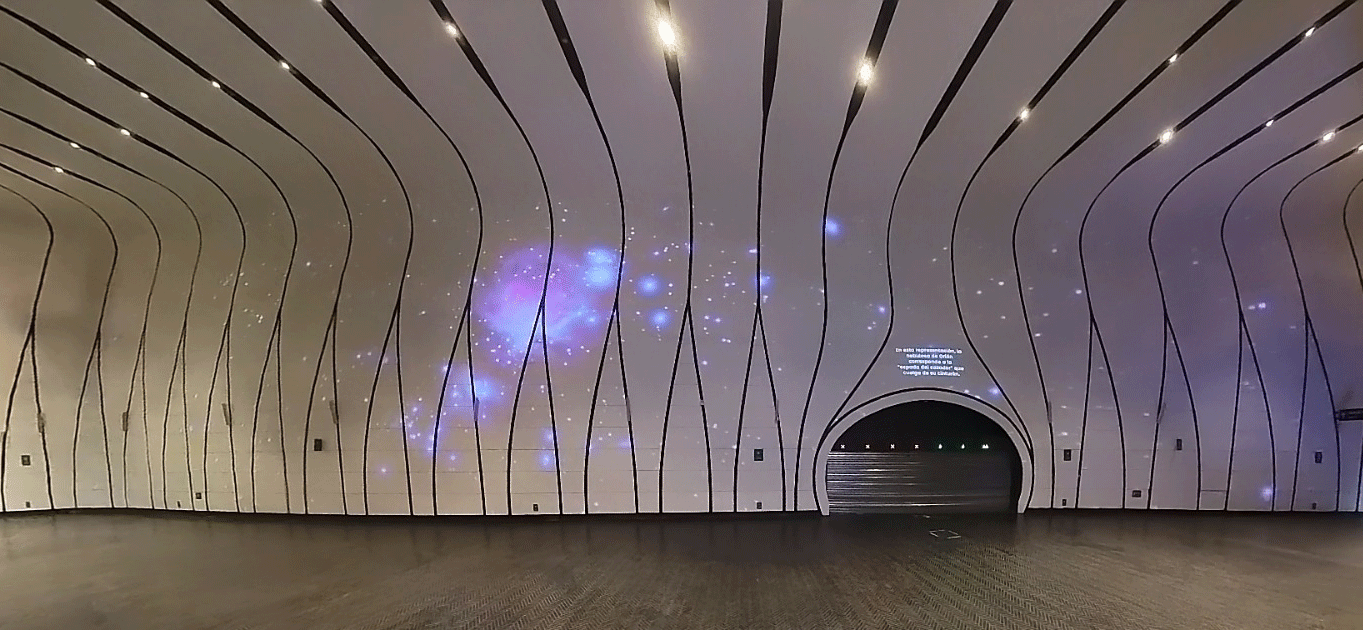[:en]Millennium Astrophysics Institute researchers analyzed stars from the center of the galaxy to perfect the interstellar extinction law. The director and deputy director of the institute were part of this research.
A team of astronomers led by MAS researcher, Javier Alonso-García, observing evolved stars from the center of the Milky Way, this team studied the darkening as a result of the absorption and scattering of light of object in that zone. This research, in which MAS Director Manuela Zoccali and Deputy Director Dante Minniti were part of, was highlighted by the AAS Nova of the American Astronomical Society.
Researchers observed the change in color and brightness of evolved metal-rich stars that have used up their hydrogen of their cores and now are burning helium, known as “red clump.” These stars are located in the Milky Way’s bulge and have approximately the same distance; hence their brightness and color should be the same. “However, when we observe the center of our galaxy, the light seems dimmed by dust and gas, that is why we can’t see the stars clearly,” Javier Alonso-García explains, who also is an associated professor of Universidad de Antofagasta.
This effect, known as interstellar extinction, it is less noticed at the near-infrared. For that reason, they used data from the VVV Project (Vista Variables in the Vía Láctea), an international survey in which participate more than 100 astronomers, including Chilean researchers. The VVV survey is based on observations from the most advanced telescope working at infrared wavelengths, VISTA, located at Paranal Observatory, Antofagasta.
Therefore, researchers had the opportunity to study the relation between the reddened and reduced brightness of stars in our inner galaxy, where the distribution of dust and gas is enormous. “Analyzing the change in color and brightness of these stars, we could infer and perfect the extinction law that connects both things,” the astronomer declares.
According to Alonso-García, the relevance about this work is that more accurate distances –one of the main issues in astronomy– can be measured by considering the effect that this extinction creates. “This study allows us to estimate distances to objects when we observe at low latitudes, therefore it is quite important when we study inner regions of our galaxy, but also for objects beyond, farther galaxies or supernovae that we could observe in that that direction in the future,” the researchers concludes.
Científicos del Instituto Milenio de Astrofísica, entre los que se encuentran la directora y el subdirector del instituto, estudiaron estrellas del centro de la galaxia para mejorar la ley de extinción interestelar.
Un grupo de astrónomos liderados por el Investigador Joven del Instituto Milenio de Astrofísica Javier Alonso-García, observando estrellas evolucionadas del centro de la Vía Láctea, estudiaron el oscurecimiento debido a la absorción y difusión de la luz de los objetos de esa zona. La investigación, en la que también participaron la directora del MAS, Manuela Zoccali, y el subdirector, Dante Minniti, fue destacada en AAS Nova de la American Astronomical Society.
Los científicos analizaron el cambio de brillo y color de estrellas evolucionadas ricas en metales, que han agotado el hidrógeno de sus centros y ahora queman helio, conocidas como del “red clump”. Estas estrellas están en el bulbo de la Vía Láctea y tienen aproximadamente la misma distancia, por lo que su brillo y color debiese ser el mismo. “Sin embargo, cuando observamos hacia el centro de la Vía Láctea, el gas y el polvo que hay en esa dirección del cielo no permite ver con claridad las estrellas de la zona ya que difumina su luz”, explica Javier Alonso-García, quien también es profesor asociado en la Unidad de Astronomía de la Universidad de Antofagasta.
Este efecto, conocido como extinción interestelar, se percibe en menor medida al observar en el infrarrojo. Por esto, se emplearon datos del proyecto VVV (Vista Variables in the Vía Láctea), survey internacional en el que participan más de 100 astrónomos, incluyendo numerosos chilenos. VVV se basa en observaciones del telescopio de catastros astronómicos en infrarrojo más avanzado del mundo, VISTA, ubicado en el Observatorio Paranal, Antofagasta.
De esta forma, los investigadores lograron estudiar la relación entre el enrojecimiento y la disminución de brillo de las estrellas en las zonas centrales de la Vía Láctea, donde se concentra la mayor cantidad de gas y polvo. “Estudiando el cambio de brillo y el cambio de color de estas estrellas lo que conseguimos fue inferir y perfeccionar la ley de extinción que relaciona ambas cosas”, recalca el astrónomo.
Sobre la relevancia de este trabajo, para Alonso-García es que al considerar el efecto que está extinción produce, se pueden calcular distancias más precisas, lo que corresponde a uno de los problemas de la astronomía en general. “Esta investigación nos permite calcular distancias a objetos cuando observamos a bajas latitudes por lo que es muy importante cuando estudiamos las regiones internas de nuestra galaxia, pero también para objetos que están mas allá, galaxias más lejanas o supernovas que pudiésemos observar en el futuro mirando en esa dirección”, concluye el científico.













